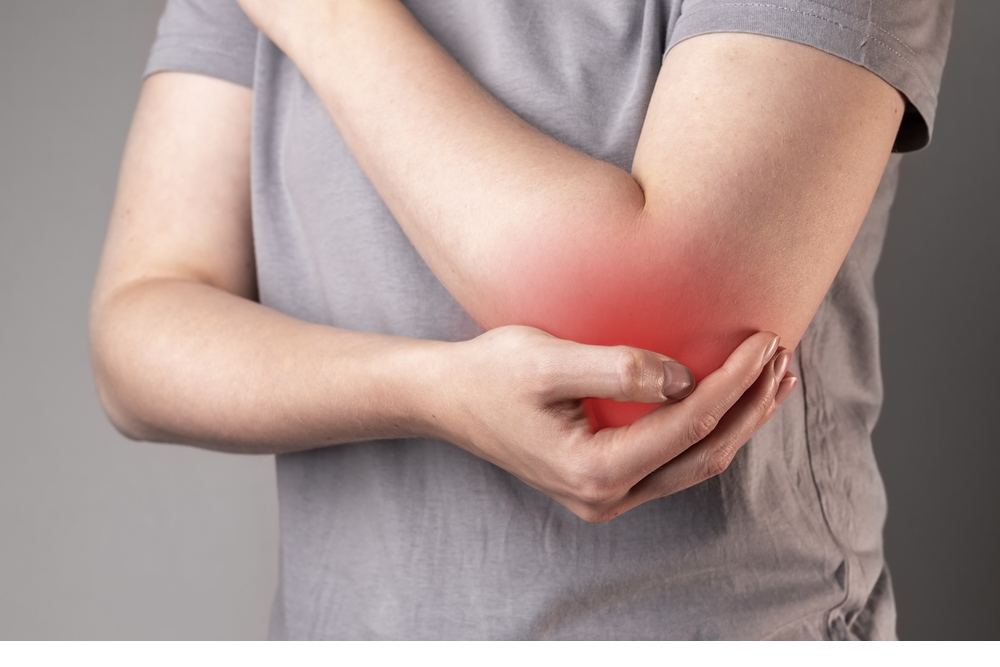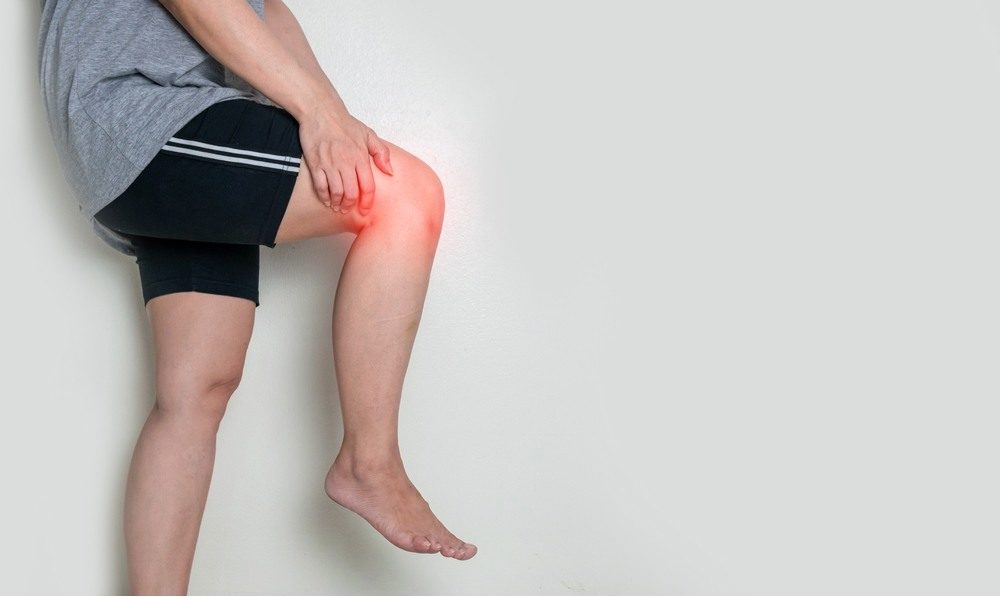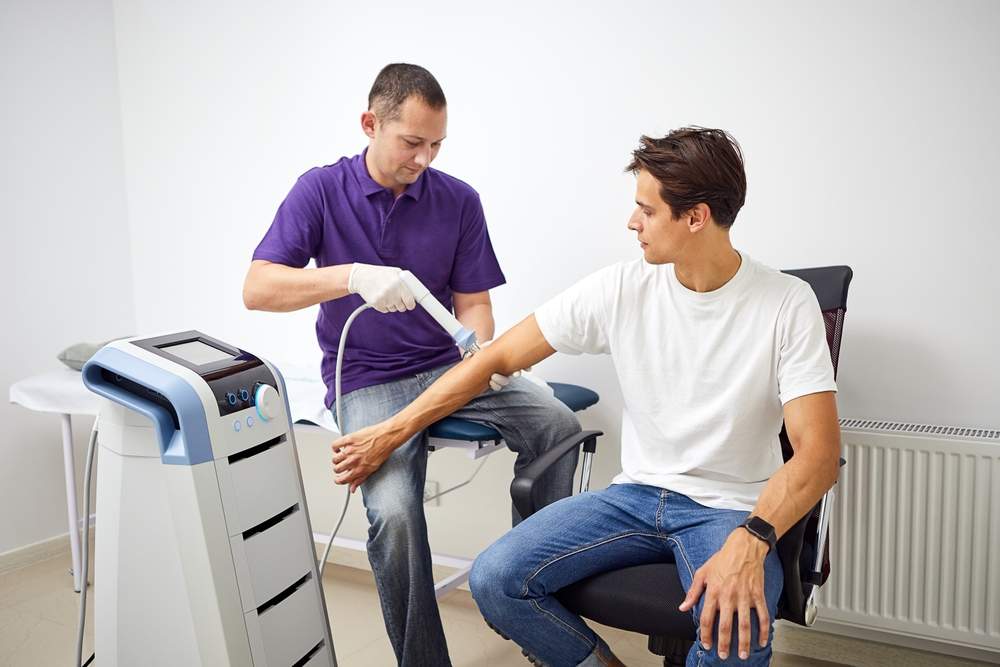 After a car accident, you might feel some pain and discomfort. Perhaps your neck is sore from a whiplash injury, or you have headaches and feel stiff or sore. But what do you do if you notice pain and swelling around your joints? One potential cause of joint pain, swelling, and restricted movements could be what’s known as bursitis. A car accident can put a lot of pressure and stress on your whole body, including your joints. If you experience pain, swelling, and redness around one or more joints after a car accident, you could be dealing with bursitis pain. Bursitis can affect any of your joints, though it is most common in the elbow, knee, hip, and ankle. Here’s everything you need to know about bursitis and what this type of car accident injury could mean for you.
After a car accident, you might feel some pain and discomfort. Perhaps your neck is sore from a whiplash injury, or you have headaches and feel stiff or sore. But what do you do if you notice pain and swelling around your joints? One potential cause of joint pain, swelling, and restricted movements could be what’s known as bursitis. A car accident can put a lot of pressure and stress on your whole body, including your joints. If you experience pain, swelling, and redness around one or more joints after a car accident, you could be dealing with bursitis pain. Bursitis can affect any of your joints, though it is most common in the elbow, knee, hip, and ankle. Here’s everything you need to know about bursitis and what this type of car accident injury could mean for you.
What is Bursitis?
Any health condition that ends in “-itis” has to do with inflammation. Bursitis refers to inflammation that affects the bursae, which are fluid-filled sacs around your joints. Bursae can be found where tendons, muscle tissue, and skin meet bones. These fluid-filled sacs provide lubrication to your joints and help reduce friction when you move. If one or more of these bursae around a joint become irritated or inflamed, it can lead to pain and other symptoms. Bursitis can be a painful condition, and you might not realize that’s what is bothering you after a car accident because the symptoms can be similar to other car accident injuries. That’s why you want to get checked out by a car accident doctor to confirm what is causing your pain and other symptoms.
Symptoms of Bursitis
 The three most common symptoms of bursitis include pain, stiffness, and swelling. Pain occurs with bursitis for a variety of reasons. You could experience sharp or shooting pain when you move the joint a certain way. Bursitis can also cause disabling joint pain that makes certain movements seem impossible. Bursitis pain can also hurt more when you press on the joint. You may also feel stiff and achy, like even your bones are sore. Bursitis can cause uncomfortable symptoms that make you want to restrict your movements to avoid the discomfort. You may also notice swelling and redness around the affected joint. Excessive swelling and bruising should be addressed by a medical professional as soon as possible, especially if you also have a fever and limited use of the joint. Fever can be a sign of serious infection and should be addressed right away to avoid complications.
The three most common symptoms of bursitis include pain, stiffness, and swelling. Pain occurs with bursitis for a variety of reasons. You could experience sharp or shooting pain when you move the joint a certain way. Bursitis can also cause disabling joint pain that makes certain movements seem impossible. Bursitis pain can also hurt more when you press on the joint. You may also feel stiff and achy, like even your bones are sore. Bursitis can cause uncomfortable symptoms that make you want to restrict your movements to avoid the discomfort. You may also notice swelling and redness around the affected joint. Excessive swelling and bruising should be addressed by a medical professional as soon as possible, especially if you also have a fever and limited use of the joint. Fever can be a sign of serious infection and should be addressed right away to avoid complications.
Types of Bursitis
The human body has 360 joints in the body and more than 150 bursae around those joints. Damage to one or more of those small, fluid-filled sacs can cause symptoms that send you to the doctor’s office. The different types of bursitis are typically categorized based on the location of the affected bursae. Bursitis is more common in the shoulder, elbow, and hip. Bursitis that impacts bursae around the elbow joint is known as olecranon bursitis, while bursitis in the hips is called trochanteric bursitis. Bursitis is typically categorized as either chronic or acute. Chronic bursitis can develop along with other health conditions like arthritis. Acute bursitis can appear suddenly, like with a car accident injury. Your doctor may also classify your bursitis based on what is causing the infection, meaning an infection or a trauma to the area. Septic bursitis is caused by an infection to the bursa, while aseptic bursitis is caused by injury to the joint area. Aseptic bursitis is the more common cause when it comes to car accident injuries.
Common Causes of Bursitis
The common causes of bursitis can also impact the severity of the condition. Here are examples of common causes of bursitis and how they can impact you.
Car Accident Injuries
Sudden trauma to the joint can occur due to a car accident. The force of impact can jostle the body, putting significant stress and strain on your bones, muscles, and joints. You could also bump your shoulder, elbow, or knee into part of the vehicle because of the crash, which can aggravate or damage the bursae.
Sports Injuries
A sudden blow to one or more joints while playing sports can also lead to bursitis. Sports injuries can also develop slowly over time because of repetitive movements and overuse. Bursitis can be a chronic condition that impacts athletes when repetitive motions cause the bursae to become inflamed and lead to bursitis. Athletes may develop bursitis as their joints become aggravated from not warming up or using improper form for strenuous or repetitive activities.
Joint Damage
Damage to the joints from a health condition like arthritis or osteoporosis can also make your joints more susceptible to an issue like bursitis. A chronic medical condition can lead to joint damage that aggravates or inflames bursae around affected joints. If you have a chronic condition that causes bursitis, you want to make sure to stop any movements or activities that cause an increase in pain as this can make the condition worse and may even lengthen your recovery time.
Infection
An infection that spreads to the fluid of the bursae can also lead to a serious health condition with bursitis. Septic bursitis refers to inflammation caused by a bacterial infection. Skin, blood, or joint infections can also spread to the fluid in the bursa and cause bursitis.
Diagnosing Bursitis after a Car Accident
 Talk to your car accident doctor if you experience pain, stiffness, and swelling in one or more joints after an accident. Your doctor may be able to diagnose a case of bursitis with a physical exam. However, if you were recently in a car accident, your doctor may also want to run tests to rule out other possible car accident injuries. An X-ray or CT scan can provide your doctor with images of the affected area to confirm a diagnosis. They may also run blood tests or other tests like a needle aspiration to determine a diagnosis of bursitis. A prompt and accurate diagnosis of bursitis can help your doctor determine the best course of action for you going forward.
Talk to your car accident doctor if you experience pain, stiffness, and swelling in one or more joints after an accident. Your doctor may be able to diagnose a case of bursitis with a physical exam. However, if you were recently in a car accident, your doctor may also want to run tests to rule out other possible car accident injuries. An X-ray or CT scan can provide your doctor with images of the affected area to confirm a diagnosis. They may also run blood tests or other tests like a needle aspiration to determine a diagnosis of bursitis. A prompt and accurate diagnosis of bursitis can help your doctor determine the best course of action for you going forward.
How to Treat Bursitis after a Car Accident
There are several different ways to treat a condition like bursitis after a car accident. Your treatment plan may also vary depending on the severity of your bursitis and the presence of other injuries. Here are some examples of how your car accident doctor may treat you for bursitis.
RICE Method
For a mild case of bursitis, your doctor may recommend the R.I.C.E. Method, which stands for rest, ice, compression, and elevation. Resting after a traumatic event like a car accident is good for your whole body and can help take the pressure off joints you commonly use. Icing the area can also help reduce swelling, while the cold temperature can provide a temporary numbing sensation to help ease the pain. Compression refers to a wrap or brace that can help support the joint and control the inflammation while you heal. Finally, elevate the affected joint to help the swelling go down and ease your pain and discomfort.
Stretches & Exercises
Your doctor may also recommend stretches and exercises to help provide a natural solution for pain management. A car accident physical therapist can walk you through stretches and exercises you can do in treatment and safely at home in between sessions. These stretches and exercises can help you gain better strength and flexibility in the affected joint while also helping to gently improve your mobility and range of motion. Your physical therapist can also talk to you about how to prevent bursitis from reoccurring in the future. Practicing ways to strengthen your muscles that support your joints and utilizing good posture and technique can go a long way toward healthy joints.
Surgery
In some cases, surgery may be necessary to address an affected bursa. Surgery for bursitis is more common with septic bursitis, where an infection must be addressed, though significant damage to a joint from a car accident or other injury may also require surgical intervention.
Visit a Car Accident Doctor Near You
The best way to fully recover from a car accident injury like bursitis is to get prompt medical treatment. The sooner you visit your Conyers car accident doctor, the sooner you can get started on a treatment plan to help relieve your pain and discomfort. At AICA Orthopedics in Conyers, our car accident doctors have the skill and expertise to diagnose and treat a wide range of car accident injuries. We recognize that many car accident injuries come with similar symptoms like pain, swelling, and discomfort, so we work hard to ensure you have the most accurate diagnosis and a personalized treatment plan that’s right for you. Our team of Conyers doctors can also work with you to manage any existing or underlying health conditions that may impact your bursitis and help you get to a healthier place.
